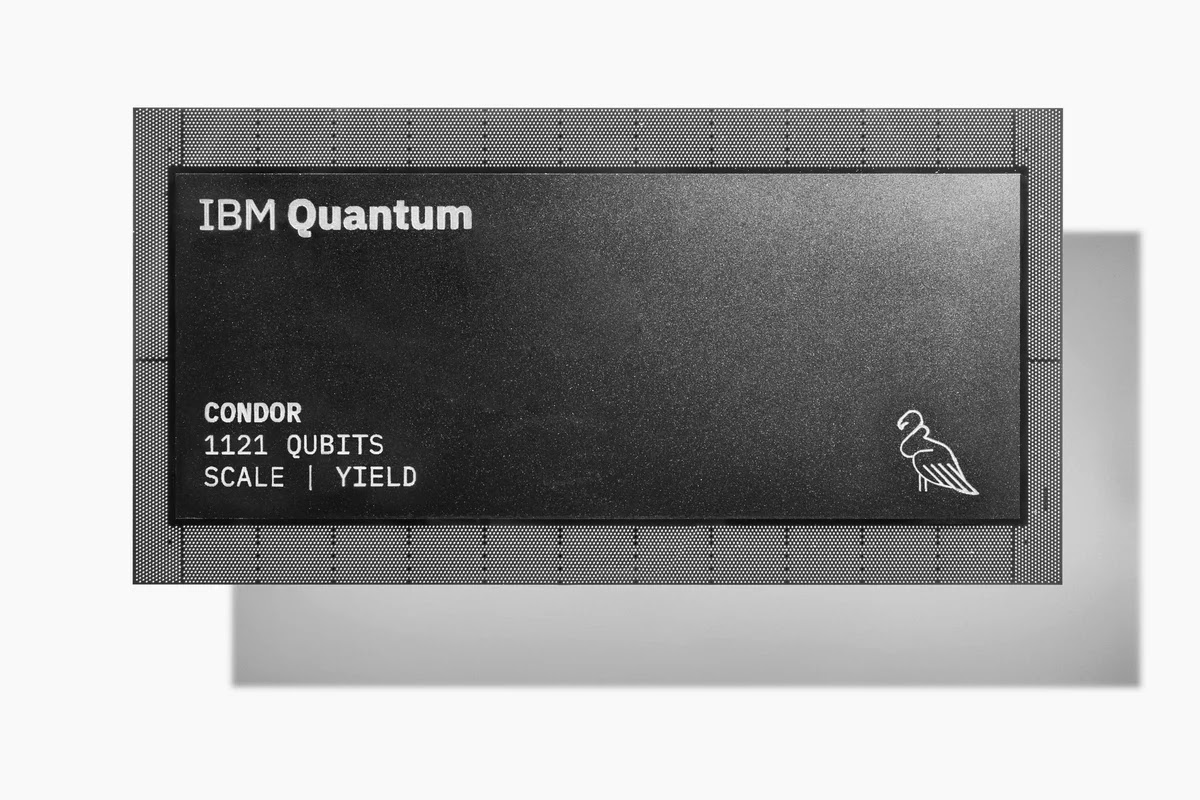IBM has recently unveiled its latest quantum computing milestone with the introduction of Condor, a quantum processor boasting an impressive 1,121 qubits. This marks a significant advancement in IBM’s quantum roadmap, showcasing a quantum machine with over 1,000 qubits for the first time. However, the company is now shifting its focus from sheer qubit quantity to prioritizing error resistance in its quantum machines.
Quantum Computing Roadmap: A Brief Overview
For several years, IBM has been diligently following a quantum computing roadmap characterized by a doubling of qubit numbers annually. The culmination of this effort is the Condor chip, featuring 1,121 superconducting qubits arranged in a distinctive honeycomb pattern. This achievement builds upon IBM’s previous breakthroughs, including a 127-qubit chip in 2021 and a 433-qubit one in the preceding year.
Quantum Computers and Their Unique Promise
Quantum computers harness the principles of quantum mechanics, exploiting phenomena such as entanglement and superposition. These unique aspects allow qubits to exist in multiple collective states simultaneously, enabling the performance of computations beyond the capabilities of classical computers.
The Challenge of Quantum Error Correction
Despite their promising potential, quantum states are susceptible to errors. IBM acknowledges this challenge and is adjusting its strategy to focus on improving error resistance rather than pursuing larger qubit counts. The company recognizes that error-correction techniques are crucial for the practical implementation of quantum computing.
Heron: A Leap in Error Resistance
As part of its new approach, IBM introduces the Heron chip, boasting 133 qubits with a record-low error rate, three times lower than its predecessor. This emphasis on error reduction is in line with the industry consensus that effective error-correction techniques may necessitate over 1,000 physical qubits for each logical qubit.
Quantum Low-Density Parity Check (qLDPC): A Promising Alternative
In recent months, researchers at IBM have expressed enthusiasm for an alternative error-correction scheme known as quantum low-density parity check (qLDPC). This novel approach holds the potential to significantly reduce the required number of physical qubits for error correction.
Challenges and Future Prospects
While the qLDPC technique presents a promising solution, its implementation with superconducting qubits poses considerable challenges. Physicists, including Mikhail Lukin from Harvard University, acknowledge the excellence of IBM’s theoretical work but caution that practical experimentation may take years.
IBM’s Vision: Towards Useful Quantum Computations
IBM’s latest roadmap envisions achieving practical quantum computations, such as simulating catalyst molecules, by the end of the decade. To realize this ambitious goal, IBM plans to focus on developing chips specifically designed to accommodate qLDPC-corrected qubits, aiming for a network of interconnected chips with enhanced error resistance.
Important Questions Related to Exams
Q. What is the name of IBM’s latest quantum processor, and how many qubits does it feature?
Answer: IBM’s latest quantum processor is named Condor, and it boasts 1,121 qubits.
Q. What is the name of the chip introduced by IBM with 133 qubits and a record-low error rate?
Answer: The chip introduced by IBM with 133 qubits and a record-low error rate is called Heron.
Q: What quantum phenomena do quantum computers exploit to perform computations beyond classical computers?
Answer: Quantum computers exploit phenomena such as entanglement and superposition to perform computations beyond the capabilities of classical computers.




 Hyderabad Start-ups Build Mini Satellite...
Hyderabad Start-ups Build Mini Satellite...
 Gaganyaan and Artemis-II: Landmark Human...
Gaganyaan and Artemis-II: Landmark Human...
 Rewind 2025: ISRO's Missions, Milestones...
Rewind 2025: ISRO's Missions, Milestones...







